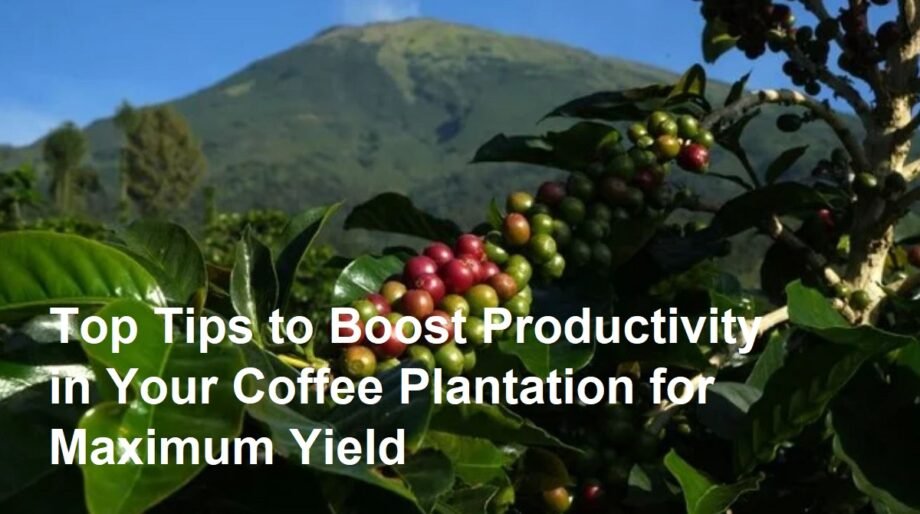Introduction
Productivity in coffee plantations is essential for sustaining profitability, ensuring crop quality, and meeting the growing demand in the global market. Whether you manage a small family-owned plantation or a larger commercial farm, implementing effective strategies can vastly improve your coffee yield and overall plantation health. This guide shares practical and research-backed tips to increase productivity in coffee plantations, keeping sustainability and best agricultural practices at the core.
Understanding the Basics: Soil and Climate Management
Successful coffee production begins with optimal soil and climate conditions. Coffee plants thrive in well-drained, fertile soils rich in organic matter, with a slightly acidic pH between 6.0 and 6.5. Regular soil testing helps farmers monitor nutrient levels and adjust fertilization plans accordingly. Maintaining soil health with organic compost and mulching prevents erosion and improves moisture retention, essential during dry seasons.
Coffee grows best in tropical climates, ideally at altitudes between 600 and 2,000 meters. Ensuring proper shade management through agroforestry can protect coffee plants from direct sunlight and temperature extremes, contributing to better bean quality and tree health.
Tip 1: Choose High-Quality Coffee Varieties
Selecting the right coffee varieties suited for your region’s climate and soil is fundamental. Disease-resistant and high-yield varieties can withstand pests and diseases better, reducing loss and improving productivity. Consult agricultural experts or local coffee research centers to identify varieties best aligned with your plantation’s conditions.
Tip 2: Prune Regularly for Vigorous Growth
Pruning is key to managing the coffee plants’ growth, improving sunlight penetration, and air circulation within the canopy. Removing old, dead, or diseased branches encourages new shoots and helps prevent fungal infections. Regular pruning also facilitates easier harvest and pest management.
Tip 3: Optimize Fertilization and Nutrition
Balanced fertilization tailored to the soil’s nutrient profile enhances coffee growth and bean development. Use a combination of organic and inorganic fertilizers to supply nitrogen, phosphorus, potassium, and micronutrients. Over-fertilization should be avoided as it can harm plant health and the environment. Precision in fertilization not only boosts yield but supports sustainable farming.
Tip 4: Implement Integrated Pest and Disease Management (IPM)
Pests and diseases like coffee leaf rust, berry borer, and nematodes can drastically reduce productivity. IPM involves monitoring pest populations, using resistant varieties, practicing good sanitation, and applying biological controls before resorting to chemical pesticides. This approach protects the plants while minimizing environmental damage and pesticide resistance.
Tip 5: Timely and Efficient Harvesting
Harvesting coffee cherries at the right maturity stage ensures superior cup quality and prevents losses. Implementing selective picking, where only ripe cherries are harvested, though labor-intensive, results in better products and repeat customers. Training workers and using mechanized tools where appropriate can improve harvesting efficiency.
Tip 6: Adopt Modern Irrigation Techniques
Water management is crucial, especially in areas with irregular rainfall patterns. Drip irrigation systems provide water efficiently to coffee plants, reducing wastage and promoting deep root development. Efficient irrigation can also extend the growing season and stabilize yields during droughts.
Tip 7: Post-Harvest Handling and Processing Excellence
Productivity isn’t solely about harvest volume but also about preserving quality after picking. Proper processing, drying, and storage techniques reduce bean loss and maintain flavor profiles, enhancing market value.
Final Thoughts
Boosting productivity in coffee plantations requires adopting a holistic approach that incorporates modern agricultural science, sustainable practices, and constant monitoring. By focusing on soil health, plant management, pest control, and efficient harvesting, coffee farmers can achieve higher yields while preserving the environment. Continuous learning, adaptation, and leveraging expert advice will position plantations for long-term success and profitability in an increasingly competitive coffee industry.









